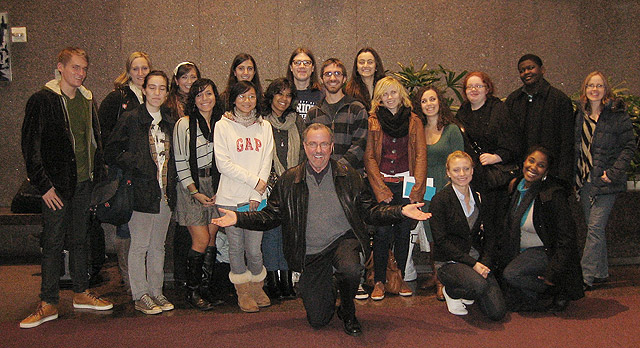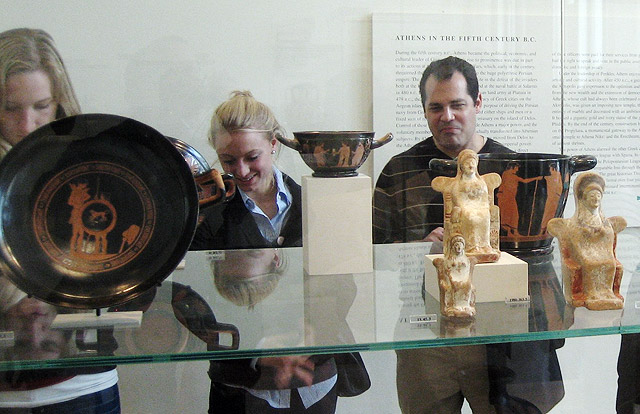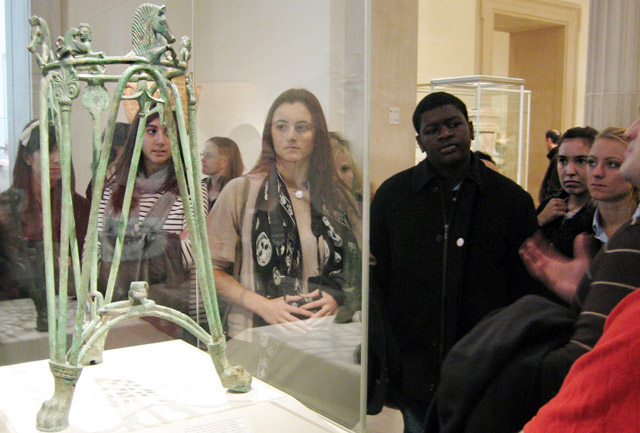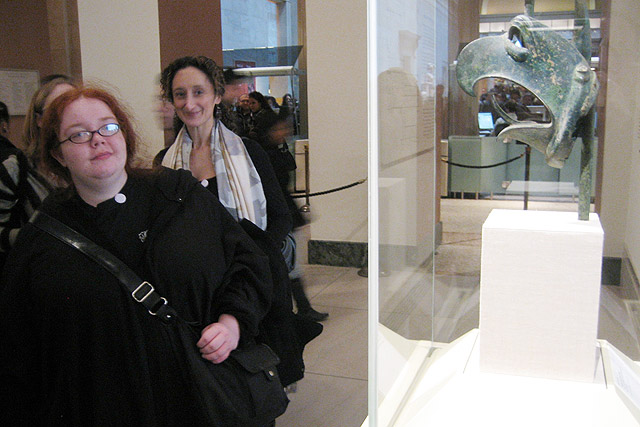In New York, Classical Studies Examines Relics of Classical Society




The inspiration for the trip, “Heroes, Mortals and Myths in Ancient Greece”, a traveling exhibit organized by the Walters Art Museum in Baltimore, showcased many lesser-known pieces of Greek art from the 6th to 1st centuries B.C.E. Though ostensibly linked by the overarching theme of Greek myth, students managed to interpret and appreciate the materials in a surprising variety of ways.
According to Adam Peck ’12: “Students from Eirene Visvardi’s seminar on Gender and Sexuality in Ancient Greece pointed out scenes of ritual courtship and marriage. Members of Jorge Bravo’s Survey of Greek Art and Archaeology discussed variations in form and style. Even students in the advanced Greek language class had a laugh looking at lekythoi, small oil jars frequently mentioned in their translations of Aristophanes’ Frogs.
“The Royal Athena Gallery introduced students to the “other” side of archaeology. With the look of a cluttered novelty shop outside the Acropolis (except these vases were real), the gallery offered a stark contrast to the spacious and thoughtfully arranged exhibit at the Onassis Center. Students carefully navigated the cases of objects, joking with the professors about which pieces they would buy if they had $100,000.
At the massive galleries of the Metropolitan Museum of Art, as with the heroes exhibit, everyone found something that piqued his or her interests. The professors offered a tremendous amount of information about the various items, discussing the pieces both in the context of their classes, and classical history as a whole. The crowd slowly fragmented into smaller groups as we wandered the sunlight halls; broader lecture gave way to detailed discussion on the minutiae of particularly interesting objects. In a field like classical studies where there is not always a right or wrong answer, informal discussion within small groups of students and professors provides a valuable means of understanding an ancient culture through its material remains. There is a good reason why trips like this have become a tradition in the Classics department: balancing enjoyable outing with scholarly exercise, visits to museums enrich the study of classical civilization and honor the principle of a liberal arts education.”

